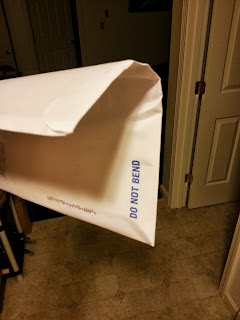THAT unknown medical.
You're called to residence for an unknown medical. Short response time to scene.
Once you arrive you gain access by unlocked door and find patient slumped to the right in a kitchen chair and moaning "oh my head, it hurts" over and over. Patient responds to speech by only continued moans. Patients medications suggest significant cardiac history. Patient rapidly moved to stair chair and moved to ambulance. While moving patient from the house he stops moaning and is no longer responding to voice, only painful stimulus.
- You rapidly get vitals (BP210+/140+, HR 70+, SpO2 90 before O2, 97 on 4LPM)
- 12 lead EKG (unremarkable)
- IV access established
- Blood glucose analysis (100-120),
- Stroke blood draws acquired.
The ER prepares for an RSI as the patients respiration become slow, deep, and erratic. The patient is now showing Cushing's Triad. They're using 50mg of Etomidate and 100mg of succinylcholine as induction agents. the patient is manually ventilated with 100% oxygen and a nasal cannula pre-oxygenating him for a safer intubation. As the GlideScope is positioned the screen goes from flashes of pink to a picture perfect image of the epiglottis and vocal cords. The image holds true as we watch the endotracheal tube slip pass the vocal cords. Listen. Listen. Listen. Stomach is silent with beautifully clear lung sounds. The room is filled with more electronic cries as the ventilator is turned on. Oxygen. Power. Adult. Intubated. Check.
The respiratory therapist fine tunes the vent settings as we prepare to go straight to CT. We move like a small herd down the hall. 1... 2... 3... The patient is lifted to the CT bed then you retreat to the viewing room. As the machine hums you see the images begin to appear. Ok. Ok. Ok. Ok. Oh no. White overcomes the images as you reach the cerebellum. The resident that came over with you says it looks like a severe bleed (different patient, similar CT). Radiology will confirm ASAP. As you move the patient back to the ER. The patient is stable enough now. The crowd has died down and it's just you and the patients nurses. You've done everything you can now. The patients family has just started to arrive. You exit as the doctors try to explain the grim situation. Even with the technology of today; we can't save everyone. You're only comfort is you helped get the patient to a place where they could go surrounded by family and loved ones. They got their final goodbyes.
Leaving the ED you look and see that from dispatch till now was about an hour. You still have 8 hours of shift left as the tones drop for another call, this time for toe pain. You live a weird life, but couldn't ask for anything different.

Comments
Post a Comment